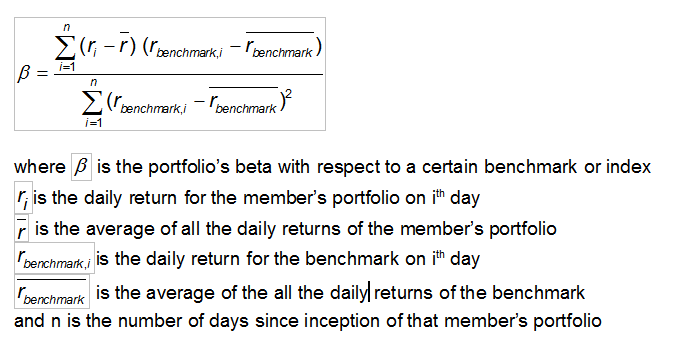 We have updated the Alpha and Beta calculations today so thought we would take the opportunity to explain more about these measures and how we calculate them. One of our members had spotted a technical bug in the calculation, which you can find displayed on each members fact sheet. Simply described Alpha and Beta are used to help anticipate the future performance of a chosen
We have updated the Alpha and Beta calculations today so thought we would take the opportunity to explain more about these measures and how we calculate them. One of our members had spotted a technical bug in the calculation, which you can find displayed on each members fact sheet. Simply described Alpha and Beta are used to help anticipate the future performance of a chosen
portfolio.
Beta is a risk measure. It essentially quantifies the sensitivity of the
portfolio’s returns to the underlying benchmark. The value is therefore
expected to be a predictor of the portfolio’s returns relative to the market, a value less than 1 implying lower volatility and greater than one implying greater risk.
Mathematically, beta is the slope of the least squares
regression of the fund’s returns vs the index returns. This is the calculation we use:
Alpha is a measure of relative return. It is a metric of out/underperfomance relative to ones benchmark. The formula measures the difference between the return generated by the portfolio and that generated by the index,
taking into account the beta (i.e. the risk the portfolio manager has taken to achieve this return). A positive
alpha means that the portfolio has outperformed the chosen benchmark, where a negative alpha
implies the portfolio has underperformed.
Mathematically, alpha
is the intercept of the least squares regression of the portfolio’s returns
versus the benchmark returns. We use the following formula:
If you have any questions, or views on how we can improve the performance calculations overall we would love to hear from you



